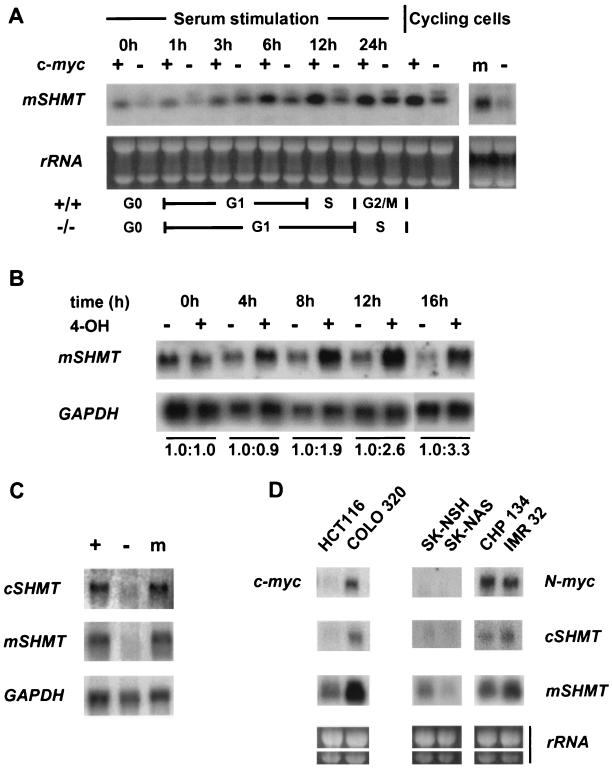FIG. 3.
Genes for mSHMT and cSHMT are Myc-responsive genes. (A) RNA isolated from serum-stimulated or logarithmically growing c-myc-null cells (lanes marked −), parental Rat-1 cells (lanes marked +), or c-myc-null cells expressing a c-myc cDNA (lane m) was probed in a Northern blot with an mSHMT-specific probe. Ethidium bromide-stained 28 and 18S rRNAs are shown in each lane as a loading control. The numbers above the blots indicate times after serum induction. (B) c-myc-null cells expressing c-Myc-ER were passaged several times under subconfluent conditions (<50% confluence) to obtain cells in an exponential phase of growth. 4-OH was added directly to the medium at a final concentration of 200 nM. RNA was collected following the addition of 4-OH at the time intervals shown above the blots. RNA was also collected from untreated cells at the same time intervals. RNA was probed sequentially by Northern blotting with mSHMT and GAPDH probes. A number below a blot indicates the fold induction of the mSHMT-specific message normalized to the amount of GAPDH in each lane at each time point. (C) RNA isolated from logarithmically growing c-myc-null cells (lane marked −), parental Rat-1 cells (lane marked +), or c-myc-null cells expressing a c-myc cDNA (lane m) was sequentially hybridized by Northern blotting with probes specific for mSHMT, cSHMT, and GAPDH. (D) RNA was isolated from logarithmically growing colon carcinoma cells (HCT116 and Colo320) or neuroblastoma cells (SK-NSH, SK-NAS, CHP-134, IMR32) and sequentially hybridized by Northern blotting with probes specific to the mSHMT, cSHMT, c-myc, or N-myc gene. Ethidium bromide-stained 28 and 18S rRNAs are shown in each lane as a loading control.

